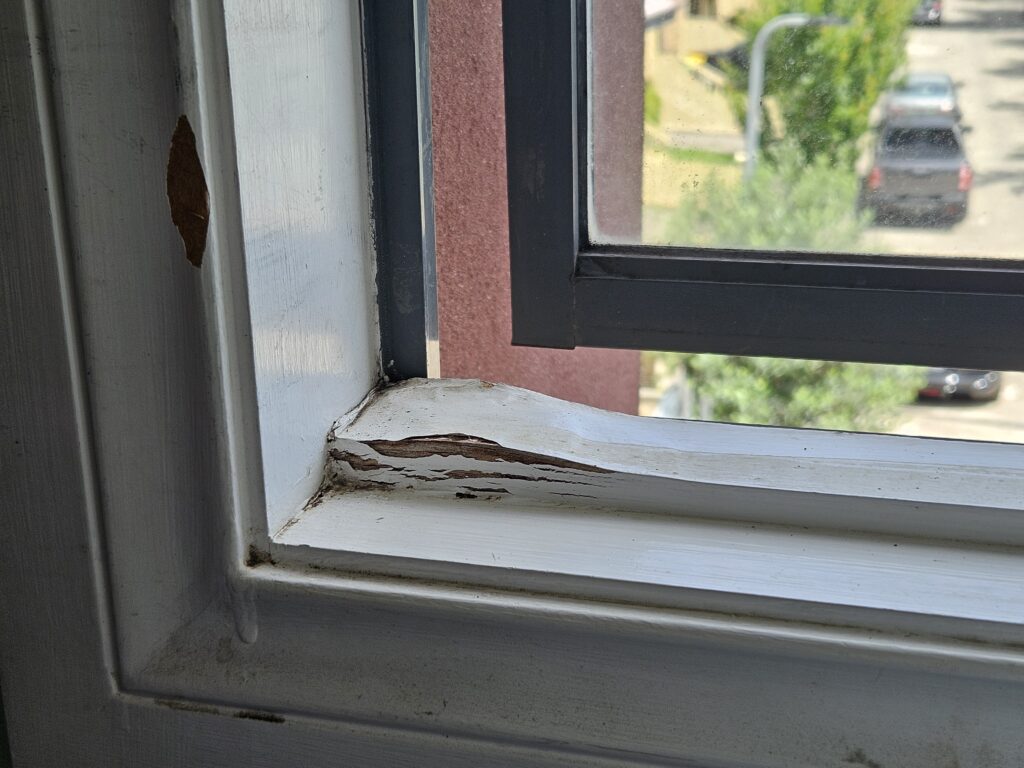What is Condensation?
Condensation is a natural outcome when warm, moisture-laden air meets a cooler surface. Although it may seem benign, neglecting condensation can result in home damage and mould growth. This article provides an in-depth exploration of the concept of condensation, its formation, and the possible effects for your residence. It is essential to understand condensation to prevent potentially unhealthy living environments and structural complications in your home.
Condensation defenition
Condensation is the result of a process where water vapour from the air transforms into liquid water against a cooler surface. Like when you take a water jug out of the fridge and leave it on the counter, water droplets from the air condensate on the surface of the bottle. The amount of condensation that takes place is subject to a range of factors, including temperature and humidity.
How Does Condensation Occur?
1. Warm, Moist Air: Warm, moist air is created when you heat your home or when you create moisture through routine activities like cooking, taking a shower, or using humidifiers. Sometimes the weather is also warm and damp which can seep into your home as you use doors and windows.
2. Contact with cooler surfaces: This warm, humid air meets cooler surfaces like windows, walls, mirrors, or cold-water pipes.
3. Dew Point: As the warm air meets these cooler surfaces, it cools down. When it reaches its dew point, the excess moisture condenses on the surfaces, forming water droplets.
Effects of condensation on your home
Condensation leads to water forming on the surface of materials in your home. Many materials such as paints, woods and metals, if not sealed properly, can be damaged due to this water presence.
• Mould growth: black mould can grow when ventilation is poor. This environment is not only unpleasant but also unhealthy. Mould can be joined with a damp smell.
• Rot and Decay: Condensation on wooden surfaces can result in rot and decay, which compromises the structural integrity of your home. This can be troublesome in places like attics, basements, and crawl spaces.
• Peeling Paint and Wallpaper: Paint and wallpaper can peel and bubble because of condensation, resulting in unsightly and expensive damage.
• Corrosion: This can occur on metal surfaces exposed to condensation, such as pipes and appliances. As a result, costly repairs or replacements may be required.
• Reduced Energy Efficiency: Condensation on windows and doors can lessen their insulating capabilities, making it more difficult to keep your home at a comfortable temperature. As you attempt to offset the heat loss, this may result in higher energy costs.

Condensation in certain instances may lead to adverse effects on your window frames, potentially resulting in damage.
Preventing and Managing Condensation
• Proper Ventilation: Ensure your home is well-ventilated to allow excess moisture to escape. Use exhaust fans in bathrooms and kitchens, and open windows when weather permits. As tempting as it is to stay sealed up with the heater on all winter, opening a window and ventilating your home is the easiest way to reduce the risk of condensation.
• Dehumidifiers: The ideal humidity level in your home can be maintained by installing a dehumidifier. This will actually force the moisture in the air to condense in the device itself, meaning the water condensation will not be settling on surface is in your home.
• Insulation: Proper insulation of walls, windows, and doors can help minimize temperature differences between indoor and outdoor surfaces, reducing the likelihood of condensation.
• Double Glazing: Upgrading your windows to double-glazed or insulated windows can significantly decrease condensation on glass surfaces. This ties into the insulation measures mentioned above.
• Weather Stripping: To stop cold air from entering your home, use weather stripping to seal gaps around windows and doors.
• Monitor Humidity Levels: Invest in a hygrometer to monitor indoor humidity levels. Target a relative humidity of between 30 and 50%.
Conclusion
While condensation is indeed a natural process, neglecting it can result in substantial harm to your home. To effectively address and prevent condensation, it is essential to understand its causes and effects. But rest assured it is possible to mitigate condensation, and you can safeguard your home from the impacts and establish a more pleasant and healthy living space.
